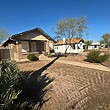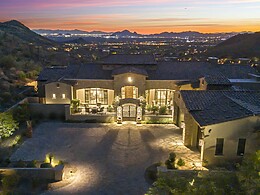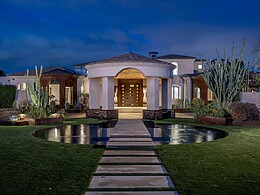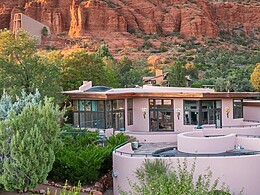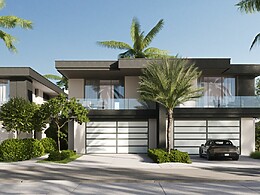
Outdoor kitchens are very popular and trending features that can be utilized year-round in Arizona, and it’s important to plan ahead so you can appreciate your outdoor cooking space. The tips below from Erik Tinker, founder of Tinker Development, are essential to consider when designing your dream outdoor kitchen.
Set a budget – Create a budget for your space according to what’s most important to you. Perhaps investing in the foundation with a nice patio or deck is what matters to you. If you’re planning to stay in the house for the long haul, you can start with modest cooking equipment and appliances that can be upgraded over time. If you think you may move, buy the equipment of your dreams in portable form so you can take it with you.
Design an “L” shape area – Every kitchen needs a place to cook and set food down, a place to eat and socialize. Map it out into sections for hot, cold, food prep, clean up, and a mingling space. Outdoor kitchens are as much about entertaining as cooking. L-shaped formations are a common choice with the chef at one end and the guests at the other.
Pick the right material and accessories – Cabinetry, countertops and floors should be weatherproof and coordinate with the climate. Stainless steel resists rust. Stone countertop options, such as granite, wear well and play up the natural setting. The growing options of composites, which are made up of wood fiber and recycled plastic, stand up to wear and tear and can balance countless architectural styles. For just about every indoor kitchen appliance, there’s a weatherproof counterpart.
Consider upgraded elements to add – A built-in stone fireplace adds to the ambience and keeps guests comfortable on cool nights. For additional cooking power, there are versions with roasting racks to insert that can double as pizza ovens.
Think beyond the kitchen – Light the entire space. An up-light in a tree covers the entertaining area, but keep the wattage low so you can stargaze after the meal. Low-voltage up-lights can be placed in nearby greenery and underneath rocks to create an inviting atmosphere. Lanterns and torches set the ambiance after the sun goes down. If you don’t like dealing with real candles, there are options to use battery powered faux-candles or fairy lights that are mess free and flameless.
Made in the shade – Incorporating both sunny and shady areas are great for when the temperature shifts. Be sure to cover the dining area completely with umbrellas or retractable awnings. If you are looking for a rustic appearance, a vine-covered pergola will radiate speckled light, and its openings can be fitted with plastic sheets to block the rain.





